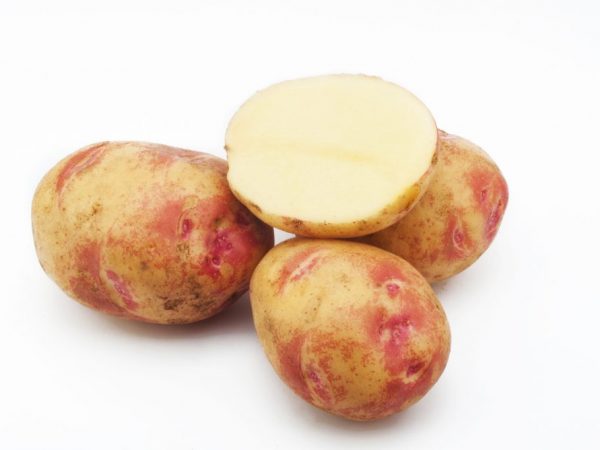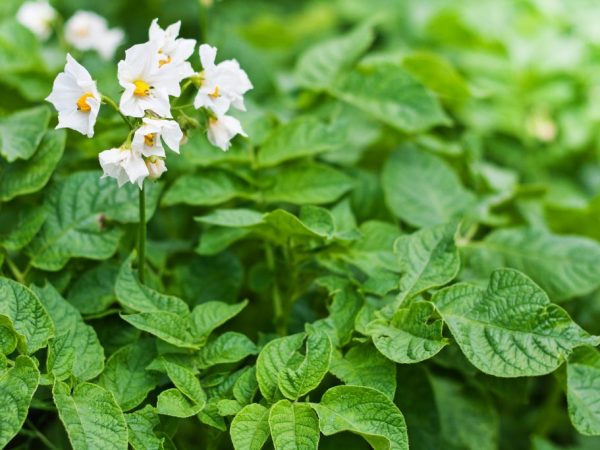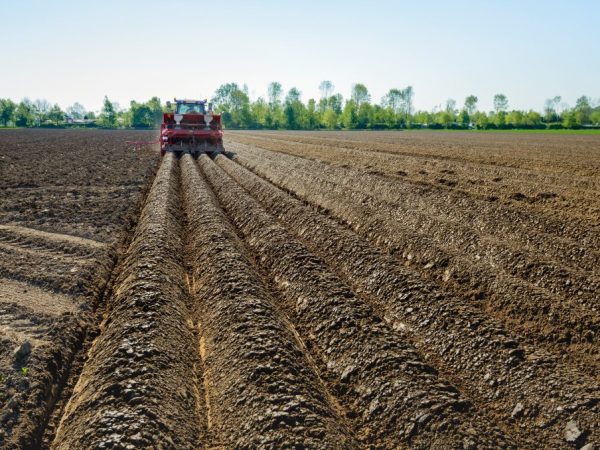Characteristics of Picasso potatoes
A wide variety of table varieties of potatoes makes it possible to choose any one you like. Early and mid-early species are suitable for early harvest. To remove potatoes in the fall and put them in storage, medium-late and late varieties are planted. Picasso potatoes are a good choice as it can be cultivated in private gardens, farmlands and industrial fields. The folk names of this vegetable are sometimes affectionate, sometimes with humor, for example: Matryoshka, Lyska, Ryabukha and Drunkard.

Characteristics of Picasso potatoes
Characteristics of the Picasso variety
This potato is popular and loved by consumers for the opportunity to grow it throughout the country. There are some features of potatoes to consider.
- Picasso belongs to the late look.
- Differs from others in high yield.
- It does not lose its shape during heat treatment.
- The variety is suitable for long-term storage.
In the Central and Central Black Earth regions, during autumn harvesting, you can get more than 300c / ha. On an industrial scale, it is easily removed by combines without being damaged.
The output of commercial products of technical ripeness is more than 95%. This characteristic means that the variety is profitable for growing in large areas, for sale.
Use
The taste is influenced by the sugar content (0.04%) of the tubers and the starch content in them (10%). These indicators make it possible to use potatoes for cooking various dishes.
Boiled potatoes do not boil and retain their color. When frying, the chunks do not break, but remain in the form of the original cut. On an industrial scale, it is suitable for the preparation of chips, dry powdered semi-finished products and starch.
Advantages of the Picasso variety
On a five-point scale, this potato received the highest taste rating. Consider other pluses related to this variety.
- More than 4 kg of product can be collected from 1m².
- The weight of one potato reaches 130g.
- It is immune to YN and A viruses and potato cancer.
- Potatoes are resistant to nematodes and Colorado potato beetles.
- Landings are not afraid of temperature fluctuations.
- Products can be transported over long distances.
If you collect unripe potatoes and eat them, then of course the output of potatoes will be about 3kg per 1m².
Good resistance to viruses, allows chemical treatment to be carried out less frequently, without fear of plant infection. Golden cyst nematodes do not damage tubers, but for prevention purposes, potatoes should not be grown in areas where nightshade crops were previously cultivated.

Plants are not afraid of temperature extremes
The description of the advantages will not be complete, if not to say that, subject to agricultural technology, it is possible to collect up to 600 kg of products from 1 are. Although usually the output of potatoes is about 300 kg.
disadvantages
The reasons that can create a problem when growing a Picasso variety are:
- poor soil fertility;
- late blight on tops;
- lack of immunity to viruses Y and NTN;
- common scab on tubers.
Fertility can be increased by introducing humus (40 buckets per one hundred square meters), mineral fertilizers, planting green manure (mustard, rye) on the area and then embedding them in the soil.
Description of potatoes
The plant has a spreading, lush bush, consisting of 8 - 10 straight stems. Ribbed stems of light color. They are completely covered with potato-type leaves. Large, slightly corrugated leaf blades of dark green color.
At the tops of the stems, brushes of simple white flowers are formed. The flowering of potatoes is abundant, but few berries are tied. For the yield of production, this does not matter, but when creating new varieties, seeds are needed.
The fruit nest consists of a strong root system that produces more than 20 tubers. They are oval rounded, beautifully colored. The rind is warm yellow, decorated with pink spots and stripes.
The eyes on the surface are poorly expressed and there are few of them. When stored in basements, the eyes do not germinate. On the cut, the tubers are starchy, delicate cream in color. The sections do not darken or become stained until they dry out.
Seed potato preparation
The description and characteristics of the culture confirms that the Picasso potato variety is a super elite that can be grown without prior sprouting of tubers. It is difficult or even impossible to carry out such procedures on an industrial scale. But in private farms it is easy to select seed material and put it in boxes for sprouting eyes.
Tubers of the same size, but small, are selected. The rule of experienced gardeners says that small tubers will give a large harvest. The Picasso potato variety can be exposed to light and the tubers can be allowed to accumulate solanine. This substance is a poisonous glycoalkaloid that can kill small insects such as the Colorado potato beetle while still in the soil. Before planting, tubers are often soaked for half an hour in Prestige solution.
Soil preparation

The soil must be fertilized before planting.
As mentioned earlier, chemical and organic substances are introduced into the soil. Minerals can be combined. Then for 1 hundred square meters you need:
- about 10 liters of ash;
- 2kg superphosphate;
- 1.5 kg of potassium;
- 1kg of ammonium nitrate.
Usually, there is enough potassium in the soil, but you can accurately find out its amount only by making a chemical analysis of the soil and comparing this description with the norms. The presence of nitrogen is easy to detect visually. If the vegetation on the site was distinguished by the splendor of the bushes, and the foliage had a dark saturated color, then this element does not need to be added to the soil.
Experienced potato growers advise to apply chemical fertilizers directly to the planting pits. For 1m² should be spent:
- 9g ammonium nitrate;
- 80g magnesium sulfate;
- 20g dolomite flour.
The roots of the plant are located in the surface layer, almost without going beyond the holes. All dressings are applied directly during the planting of tubers.
They are planted at home, marking the area into rows. The distance between them should be about 60cm. The distance between the planting pits is up to 25 cm. When forming ridges, on clay soils, the distance between the ridges will be about 75 cm.
For industrial cultivation, potato planters are used. Areas are also fertilized with the help of mechanical units.
Planting care
Growing the Picasso late potato variety, gardeners do the usual work of weeding, fertilizing and pest and disease control, a description of which can be seen below.
When sprouts appear, they need to be huddled if frosts still persist on the soil. But usually the first hilling is carried out at a sprout height of 25 cm. At this time, you can feed the plantings a second time, scattering fertilizers in the area of the stems. The second hilling coincides with the formation of buds on the plant.
Fertilizers can also be applied when watering the bushes, which is carried out once every 10 days. But if the summer is wet, then you should not water, but only loosen the soil.
It is better in this case to engage in the prevention of late blight on the stems. For this, Fitosporin and other drugs are used. For insect control, insecticides of a wide spectrum of action, such as Dantop, Aktara, are suitable, but often there are no Colorado beetles on the bushes. They don't like Picasso Potato leaves. This characteristic is especially pleasing to gardeners, who sometimes spend a lot of time protecting plants.
Conclusion
To harvest a good crop, you need to make every effort to care for the plantings. For high-quality and tasty potatoes and the price will be appropriate if they are grown for sale. Any housewife can cook various dishes. Salads, casseroles, potato zrazy, stuffed vegetables and many other potato products will delight you with their appearance, and the aromas will make you rather sit down at the table and taste everything that is grown and cooked with love.


